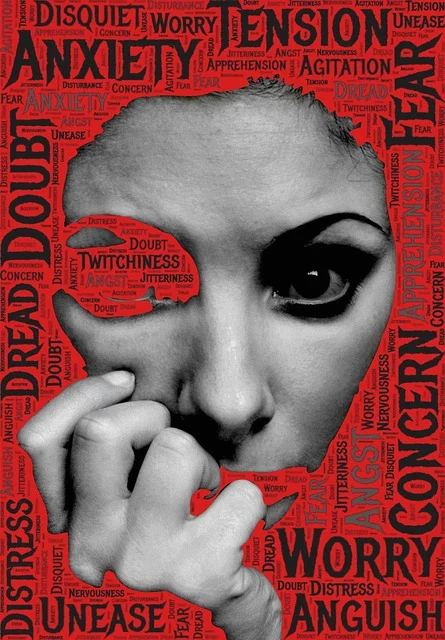Introduction
Stress is a normal and adaptive part of life. It helps humans respond to challenges, motivates performance, and ensures survival. However, when stress becomes chronic and overwhelming, it stops serving its protective purpose and begins to harm both the mind and body. This harmful form of sustained stress is known as toxic stress.

Toxic Stress Disorder refers to a state in which the body’s stress response system is persistently activated, leading to biological wear and tear that affects emotional, physical, and cognitive functioning. It is not a formal psychiatric diagnosis but a term widely used by psychologists, neuroscientists, and medical professionals to describe the long-term consequences of chronic and unmanaged stress exposure.
Unlike temporary or moderate stress, which subsides once the stressor passes, toxic stress persists. It can stem from prolonged emotional strain, trauma, neglect, or ongoing environmental adversity. Over time, toxic stress can reshape the brain, alter hormone regulation, weaken the immune system, and increase the risk of both psychological and physical disorders.
What Is Toxic Stress Disorder?
1. Defining Toxic Stress
Toxic stress occurs when the body’s natural stress response — the release of hormones such as cortisol and adrenaline — remains activated for extended periods without adequate recovery or emotional support. This prolonged activation disrupts the body’s balance and leads to physiological damage.
Psychologists often distinguish three levels of stress:
- Positive stress: short-term stress that motivates and enhances performance.
- Tolerable stress: temporary stress with potential discomfort but manageable with support.
- Toxic stress: chronic, uncontrollable stress without sufficient emotional buffering, resulting in harmful biological changes.
When toxic stress becomes a persistent state, it may evolve into toxic stress disorder, characterized by cumulative emotional and physical symptoms that impair daily functioning.
2. Causes of Toxic Stress
Toxic stress can originate from multiple sources:
- Early-life adversity: neglect, abuse, poverty, or unstable family environments.
- Chronic adult stress: work burnout, caregiving strain, or prolonged financial hardship.
- Interpersonal trauma: long-term emotional manipulation, bullying, or relationship instability.
- Environmental stress: unsafe living conditions or exposure to violence.
Without adequate support or coping mechanisms, these stressors overwhelm the body’s capacity for adaptation.
3. Biological Mechanism
The hypothalamic-pituitary-adrenal (HPA) axis is the body’s central stress system. Under chronic activation, the HPA axis overproduces cortisol, impairing the brain regions responsible for emotional regulation — particularly the amygdala, hippocampus, and prefrontal cortex.
- The amygdala becomes hyperactive, intensifying fear and vigilance.
- The hippocampus, critical for memory, may shrink under prolonged cortisol exposure.
- The prefrontal cortex, responsible for reasoning and control, becomes less effective.
This chain of neurochemical events underlies the emotional volatility, memory issues, and fatigue commonly seen in toxic stress.
What Is an Example of Toxic Stress?
Toxic stress manifests differently depending on context, duration, and individual resilience. Below are examples illustrating how toxic stress may develop and affect functioning.
1. Early Childhood Toxic Stress
A child raised in an environment of chronic neglect or parental conflict experiences continuous fear and unpredictability. The child’s developing brain adapts to a state of hypervigilance, increasing sensitivity to threats even in safe settings later in life. Without stable caregiving or emotional reassurance, this becomes a foundation for anxiety and emotional dysregulation in adulthood.
2. Workplace Burnout and Adult Stress
An adult facing relentless work demands, high expectations, and lack of rest experiences toxic stress. Over time, symptoms such as insomnia, irritability, and detachment appear. The individual may continue to function externally while internally feeling depleted and anxious — a classic presentation of toxic stress in professionals.
3. Relationship-Related Toxic Stress
Living in an emotionally abusive or controlling relationship can induce chronic psychological distress. Constant fear, criticism, or unpredictability maintains the stress response at a high level, eventually leading to physical symptoms like headaches, digestive issues, or cardiovascular strain.
4. Chronic Caregiver Stress
Long-term caregivers, especially those supporting individuals with chronic illness or disability, often face emotional and physical exhaustion. The ongoing responsibility, emotional attachment, and lack of personal respite contribute to cumulative stress known to impact immune health and emotional stability.
These scenarios demonstrate that toxic stress does not stem from one single event but from sustained exposure to stressors without adequate recovery or emotional support.
What Does Toxic Stress Feel Like?
Toxic stress is both a mental and physical experience. It often develops gradually, making it difficult to recognize until its effects become overwhelming.
1. Emotional Symptoms
- Persistent anxiety or irritability
- Sense of helplessness or loss of control
- Mood swings and emotional numbness
- Difficulty relaxing or feeling joy
- Low self-esteem and guilt
These symptoms often coexist with feelings of being “stuck on alert,” unable to rest even in safe conditions.
2. Cognitive Symptoms
- Difficulty concentrating
- Racing or intrusive thoughts
- Short-term memory problems
- Impaired decision-making
- Overthinking or constant worry
Cognitive fatigue results from prolonged overactivation of the stress response, affecting both work performance and daily functioning.
3. Physical Symptoms
- Muscle tension, headaches, or neck pain
- Digestive problems (irritable bowel, appetite changes)
- Chronic fatigue and sleep disturbances
- Elevated heart rate or hypertension
- Weakened immune system and frequent illness
These symptoms reflect the body’s prolonged exposure to stress hormones and inflammation.
4. Psychological Experience
Individuals with toxic stress often describe feeling emotionally trapped, drained, or disconnected from themselves. The combination of exhaustion, hopelessness, and constant vigilance resembles post-traumatic stress but without a single traumatic trigger.
Toxic stress feels like “living in survival mode” — where the mind and body never fully return to balance.
The Biological and Psychological Mechanisms of Toxic Stress
The human body is designed to cope with temporary stress, but when the stress response becomes chronic, it causes systemic damage known as allostatic load — the physiological cost of repeated adaptation to stress.
1. Hormonal Imbalance
Persistent activation of the HPA axis increases cortisol and adrenaline production. Over time, the body may become resistant to cortisol regulation, leading to fatigue, immune suppression, and hormonal dysregulation.
2. Inflammation and Cellular Aging
Chronic stress increases inflammatory cytokines and oxidative stress, which contribute to:
- Cardiovascular disease
- Diabetes
- Weakened immunity
- Accelerated cellular aging
This biological wear and tear can shorten lifespan and reduce quality of life.
3. Neural Impact
Studies using brain imaging show structural and functional changes in stress-related brain regions. Prolonged toxic stress reduces neuroplasticity, affecting emotional learning and memory. These changes also heighten vulnerability to anxiety and depressive disorders.
4. Psychological Conditioning
From a psychological standpoint, toxic stress conditions the brain to expect threat. Even when the stressor is removed, the body continues to react as if danger persists — a phenomenon similar to trauma responses.
The Long-Term Impact of Toxic Stress
Toxic stress disorder has extensive consequences that extend across emotional, physical, and social domains.
1. Physical Health
Chronic stress contributes to numerous medical conditions:
- Hypertension and heart disease
- Autoimmune disorders
- Obesity and metabolic syndrome
- Gastrointestinal dysfunction
- Chronic pain syndromes
2. Mental Health
Psychologically, toxic stress increases the risk of:
- Anxiety and panic disorders
- Depression and burnout
- Post-traumatic stress responses
- Substance misuse and emotional dysregulation
3. Social and Occupational Functioning
Prolonged stress affects interpersonal relationships and productivity. Individuals may withdraw socially, experience irritability at work, or struggle to maintain focus. Over time, emotional exhaustion leads to reduced empathy and motivation — often mistaken for laziness or apathy.
4. Intergenerational Impact
Toxic stress can also affect parenting and family dynamics. Parents experiencing chronic stress may unconsciously transfer hypervigilance or emotional unavailability to children, perpetuating a cycle of stress sensitivity across generations.
How to Treat Toxic Stress in Adults
Effective treatment requires a comprehensive approach that addresses biological, psychological, and environmental dimensions.
1. Professional Therapy
- Cognitive Behavioral Therapy (CBT): helps reframe stress-inducing thoughts and replace maladaptive coping behaviors.
- Mindfulness-Based Stress Reduction (MBSR): teaches awareness of bodily sensations and emotions, promoting calmness.
- Trauma-Focused Therapy: assists individuals whose toxic stress stems from prolonged adversity or neglect.
- Acceptance and Commitment Therapy (ACT): encourages acceptance of internal discomfort while fostering valued life actions.
2. Medication
When stress coexists with depression or anxiety, physicians may prescribe antidepressants or anxiolytics to regulate mood and reduce physiological arousal. Medication should complement, not replace, therapy and lifestyle interventions.
3. Lifestyle Modifications
- Regular physical activity improves endorphin levels and reduces cortisol.
- Adequate sleep restores brain function and emotional regulation.
- Balanced diet supports neurotransmitter and hormone health.
- Reducing stimulants like caffeine and nicotine helps calm the nervous system.
4. Mind-Body Approaches
- Breathing exercises and yoga enhance relaxation.
- Grounding techniques counteract hyperarousal.
- Progressive muscle relaxation relieves tension stored in the body.
5. Social Support
Strong relationships buffer against stress. Talking with trusted friends, joining support groups, or seeking community engagement provides emotional grounding and resilience.
6. Stress Education and Coping Skills
Psychoeducation empowers individuals to recognize triggers and build proactive coping strategies. Journaling, time management, and self-compassion training help restore psychological balance.
Building Resilience and Preventing Toxic Stress
While complete stress elimination is impossible, building resilience helps individuals manage adversity effectively.
1. Developing Emotional Awareness
Recognizing one’s emotional state is the first step in preventing chronic stress. Emotional intelligence enables healthier responses to pressure.
2. Setting Boundaries
Learning to say no, limiting overcommitment, and protecting rest time prevent overload.
3. Cultivating Self-Care Habits
Regular mindfulness practice, exercise, adequate nutrition, and fulfilling hobbies strengthen mental stamina and emotional balance.
4. Creating Supportive Environments
Healthy workplaces and social systems that encourage psychological safety can reduce the prevalence of toxic stress. Organizations that value well-being foster healthier, more resilient employees.
When to Seek Professional Help
Individuals should seek professional support when:
- Stress persists for months without relief
- Emotional exhaustion or detachment interferes with relationships or work
- Physical symptoms (e.g., insomnia, pain, heart palpitations) intensify
- Feelings of hopelessness or depression emerge
Therapy, medical assessment, and holistic interventions can reverse much of the damage caused by toxic stress when initiated early.
Conclusion
Toxic Stress Disorder is a silent but significant threat to mental and physical well-being. Prolonged activation of the stress response can reshape the brain, weaken the body, and disrupt emotional health. Recognizing the symptoms and understanding their biological basis empowers individuals to take proactive steps toward recovery.
Healing from toxic stress involves more than symptom relief — it requires learning balance, building resilience, and restoring trust in one’s inner stability. With evidence-based treatment, supportive environments, and self-awareness, individuals can overcome the impact of toxic stress and reclaim both health and peace of mind.



